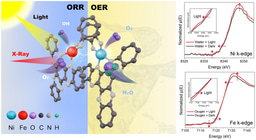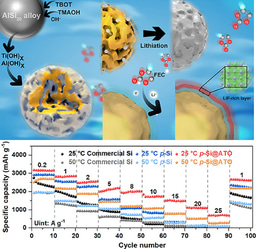Intelligent Point‑of‑Care Biosensing Platform Based on Luminescent Nanoparticles and Microfluidic Biochip with Machine Vision Algorithm Analysis
Published in Cancer, Materials, and Protocols & Methods

Realizing convenient and highly sensitive point-of-care tumor marker detection is crucial for cancer monitoring and screening. Now, researchers from the Department of Applied Physics and the Research Centre for Nanoscience and Nanotechnology at The Hong Kong Polytechnic University, led by Professor Jianhua Hao, have developed an intelligent biosensing platform based on luminescent nanoparticles and a microfluidic biochip with machine vision algorithm analysis. This innovative platform offers a new solution for the rapid and accurate detection of tumor markers such as carcinoembryonic antigen (CEA).
Why This Platform Matters
- High Sensitivity: The platform achieves an outstanding detection limit of approximately 0.021 ng mL-1 for CEA concentration, significantly surpassing some commercial biodetection devices like lateral flow assay strips.
- Noninvasive and Convenient: Utilizing saliva samples, this method is noninvasive and easy to obtain, avoiding the risks associated with blood sampling.
- Portable and Integrable: The incorporation of a machine vision algorithm enhances the platform's portability and integration capabilities, making it highly suitable for point-of-care applications.
Innovative Design and Features
- Luminescent Nanoparticles: Quantum dots with excellent photoluminescent properties are modified with specific antibodies to serve as optical labeling agents in the sandwich structure immunoassay.
- Microfluidic Biochip: The well-designed biochip enables the separation and concentration of target biomarkers, improving detection efficiency and sensitivity.
- Machine Vision Algorithm: This algorithm processes and analyzes captured images of the biochip, providing rapid and accurate diagnostic results via a smartphone.
Experimental and Practical Validation
- Detection Mechanism: Saliva samples containing CEA are mixed with quantum dot-antibody conjugates and injected into the microfluidic biochip. After UV light irradiation, the luminescent signals from the conjugated particles are captured and analyzed using the machine vision algorithm.
- Performance Comparison: The platform demonstrates superior detection capabilities compared to commercial lateral flow assay strips, with a lower detection limit and better specificity for CEA.
- Practical Application: Tests using human-sourced artificial saliva samples show that the platform can effectively detect CEA at low concentrations, indicating its potential for real-world clinical use.
Future Outlook
This intelligent biosensing platform holds great promise for the future of point-of-care diagnostics. Its combination of high sensitivity, noninvasive sampling, and portable design makes it a valuable tool for early cancer screening and monitoring. Further research and development could lead to the detection of other tumor markers and broader applications in healthcare diagnostics.
Stay tuned for more breakthroughs from Professor Jianhua Hao and the team at The Hong Kong Polytechnic University!
Follow the Topic
-
Nano-Micro Letters

Nano-Micro Letters is a peer-reviewed, international, interdisciplinary and open-access journal that focus on science, experiments, engineering, technologies and applications of nano- or microscale structure and system in physics, chemistry, biology, material science, and pharmacy.






Please sign in or register for FREE
If you are a registered user on Research Communities by Springer Nature, please sign in